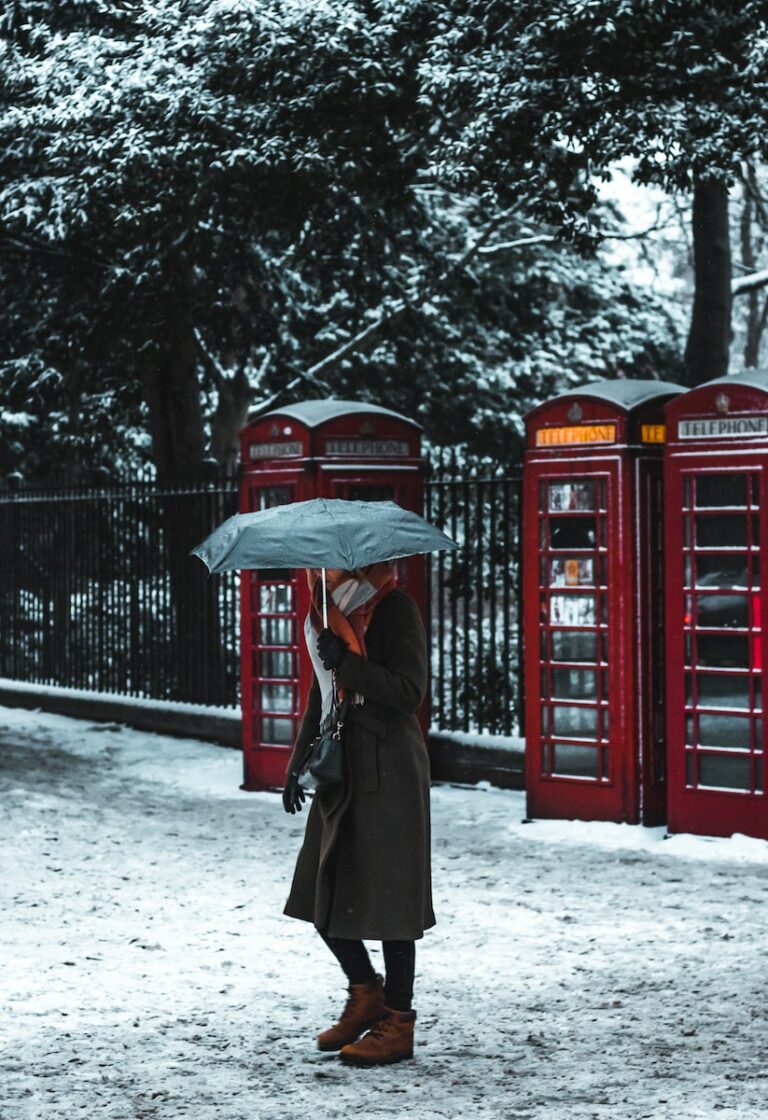London Weather
Are you prepared for the unpredictable weather in London? With an average of 106 rainy days per year, you never know when you’ll need your umbrella.
In this article, we will explore the historical weather patterns in London, the seasonal changes in its climate, and the impact of global warming on its weather.
We will also discuss extreme weather events that have occurred in the city and provide tips on how to dress appropriately for London’s ever-changing conditions.
Key Takeaways
- Increasing temperatures trend over the past decade with an average increase of 0.5 degrees Celsius per year.
- Seasonal changes in London’s climate with mild summers, chilly winters, even rainfall throughout the year, and distinct characteristics for each season.
- The impact of global warming on London’s weather, including noticeable shifts in seasonal patterns, rising sea levels threatening coastal areas, increased flooding, damage to structures, health effects such as heat-related illness and worsened respiratory conditions, and agricultural challenges due to unpredictable weather patterns.
- Impacts on infrastructure, including increased flooding and damage to structures.
Historical Weather Patterns in London
Historical weather patterns in London have shown a trend of increasing temperatures over the past decade. Climate trends indicate that temperatures in the city have been steadily rising, with an average increase of 0.5 degrees Celsius per year. This upward trend is supported by extensive weather records and historical data collected by meteorological agencies.
Temperature variations within London can be quite significant throughout the year. Summers tend to be warm, with average highs ranging from 20 to 25 degrees Celsius. Winters are generally mild, with temperatures rarely dropping below freezing. However, there can still be occasional cold spells and even snowfall.
Rainfall patterns in London are characterized by moderate precipitation throughout the year. The city receives an average of 600-700 millimeters of rainfall annually, which is evenly distributed across all seasons.
Overall, the historical data clearly indicates an upward trend in temperatures in London over the past decade, along with consistent temperature variations and moderate rainfall patterns throughout the year.
Seasonal Changes in London’s Climate
The climate in London tends to change with the seasons. Being prepared for these climate variations can help you navigate the weather trends throughout the year.
Here are some key points to consider:
-
Temperature Fluctuations: London experiences mild summers with average temperatures ranging from 15°C to 25°C, while winters can be chilly, with temperatures dropping as low as 2°C.
-
Precipitation Patterns: Rainfall is spread fairly evenly throughout the year, but expect more rain during autumn and winter months.
-
Seasonal Shifts: Spring brings milder weather and beautiful blossoms, while summer offers longer daylight hours and occasional heatwaves. Autumn welcomes cooler temperatures and vibrant foliage before winter arrives with shorter days and potential snowfall.
Understanding these seasonal changes will allow you to dress appropriately and plan activities accordingly when visiting or living in London.
The Impact of Global Warming on London’s Weather

Due to global warming, there’s been a noticeable shift in seasonal patterns in London. The impact of this change is not limited to the weather itself but also extends to various aspects of infrastructure and society. Rising sea levels pose a significant threat to coastal areas, including parts of London. Flooding becomes more frequent and severe, causing damage to homes, roads, and other vital structures.
Moreover, the health effects cannot be ignored as extreme temperatures can lead to heat-related illnesses and worsen respiratory conditions.
Agricultural challenges arise due to unpredictable weather patterns affecting crop growth and productivity. In response, policy initiatives have been implemented to mitigate these issues such as investing in sustainable infrastructure and promoting climate-resilient agriculture practices.
Impacts on Infrastructure
- Increased flooding
- Damage to structures
Health Effects
- Heat-related illness
- Worsened respiratory conditions
Rising Sea Levels
- Threatens coastal areas
- Increased frequency of flooding
Agricultural Challenges
- Unpredictable weather patterns
- Affects crop growth and productivity
Extreme Weather Events in the City
When extreme weather events occur in the city, it’s important to take necessary precautions to ensure your safety and protect your property. Here are some tips to help you stay prepared:
-
Stay informed: Keep an eye on local weather forecasts and alerts.
-
Prepare an emergency kit: Include essentials like flashlights, batteries, non-perishable food, and water.
-
Secure outdoor items: Strong winds during thunderstorms can cause damage, so secure loose objects like patio furniture or garden tools.
-
Create a plan: Have a plan in place for evacuation or sheltering in case of severe flooding or snowstorms.
London experiences a variety of extreme weather events throughout the year. Heatwaves can lead to heat-related illnesses if proper precautions aren’t taken. Flooding is a common occurrence during heavy rainfall, while snowstorms can disrupt transportation and pose risks for pedestrians. Thunderstorms bring lightning strikes and strong winds that can cause power outages and structural damage.
Tips for Dressing Appropriately for London’s Unpredictable Weather
To dress appropriately for London’s unpredictable weather, it’s important to layer your clothing and always have a light jacket or umbrella on hand.
Layering techniques are essential to combat the ever-changing conditions. Start with a lightweight base layer, such as a breathable cotton shirt, and add a sweater or cardigan for warmth.
Opt for fashionable rainwear that is both functional and stylish. Look for waterproof jackets in trendy designs and vibrant colors.
When choosing the right footwear, prioritize comfort and durability. Opt for waterproof boots or shoes with good traction to navigate wet streets.
Accessorizing is crucial in adapting to changing weather conditions. Carry a versatile scarf that can double as protection from rain or sun, along with sunglasses and a hat for sunny days.
Always be prepared by packing an extra pair of socks or gloves in case of unexpected showers or cold snaps.
FAQs
What is the weather like in London?
London’s weather is known for being quite unpredictable. In fact, Londoners regularly carry both sunglasses and an umbrella throughout the year. The hottest month of the year is normally July when the peak temperature can be 90 F (30 C) but the average temperature in July is about 70 F (22 C). The coldest month is usually January when temperatures can sink to around 33 F (1 C). Snow is pretty rare in London but if it does fall it’s typically in January or February. Some rail services can be affected by adverse weather conditions.
Don’t forget to check with your transportation provider before traveling if snow is forecast.
What is the best time to visit London?
The best time to visit London is during the summer months from June to August when temperatures are warm and the city comes alive with outdoor events and festivals.
Does it rain a lot in London?
Yes, it does rain a lot in London. The city receives an average of 23 inches of rainfall per year, with October being the wettest month.
What is the temperature in London?
The temperature in London varies depending on the season. The hottest month of the year is normally July when the peak temperature can be 90 F (30 C) but the average temperature in July is about 70 F (22 C). The coldest month is usually January when temperatures can sink to around 33 F (1 C).
What is the climate like in London?
London has a temperate maritime climate with mild winters and cool summers. The city receives an average of 23 inches of rainfall per year, with October being the wettest month.


